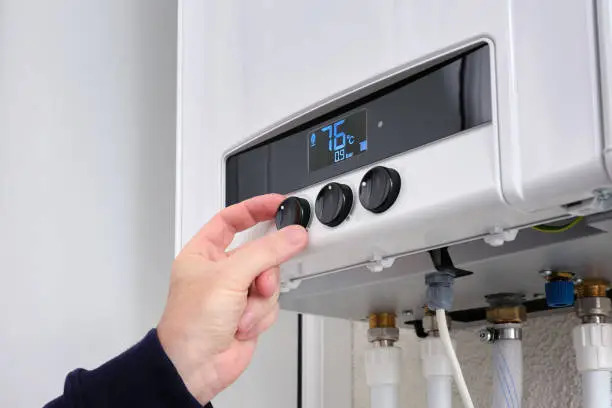A reliable boiler is essential for keeping your home warm, energy-efficient, and safe. However, many homeowners continue using outdated or inefficient boilers without realising how much money they are losing every year on high energy bills. If your boiler is old, unreliable, or expensive to run, it may be time to consider an upgrade—especially if you qualify for [Free Boiler Grants] under the government’s energy efficiency schemes.
Here are the key steps to check if your home needs a boiler upgrade, and how to make sure you don’t miss out on government support.
Step 1: Check Your Boiler’s Age
The age of your boiler is one of the biggest indicators that it may need replacement. Most boilers have a lifespan of 10 to 15 years, even with proper maintenance. If your boiler is older than this, it likely operates at a much lower efficiency level compared to modern A-rated boilers.
Signs that age is affecting your system include:
-
Slow heating
-
Frequent breakdowns
-
Noisy operation
-
Higher gas usage
If your boiler is over 12+ years old, upgrading is often the most cost-effective option—especially if you qualify for [Government Boiler Upgrade Schemes].
Step 2: Look for Rising Energy Bills
If your energy bills have been increasing despite using the same amount of heating, your boiler might be wasting energy. Older boilers burn more fuel to produce the same amount of heat, which directly increases your monthly costs.
Things to check include:
-
Gas bills are rising year-on-year
-
Increased energy use in your utility statements
-
The boiler is cycling on and off frequently.
Government programs like [Free Boiler Replacement] are designed to help households lower high heating costs by replacing inefficient boilers with modern, economical units.
Step 3: Examine the Boiler’s Efficiency Rating
Your boiler has an efficiency rating that tells you how much fuel it converts into useful heat. Ratings range from A (most efficient) to G (least efficient).
-
If your boiler is rated C, D, E, F, or G, it is using much more fuel than necessary.
-
Old non-condensing boilers can waste up to 40% of the heat they produce.
-
A new A-rated condensing boiler can reach 90–95% efficiency.
Homes with inefficient boilers often qualify for [Free Boiler Upgrade Programs], especially if they also have a low EPC rating.
Step 4: Check for Frequent Repairs or Faults
Boilers that require frequent repairs may be reaching the end of their lifespan. Repair costs add up quickly, and at a certain point, replacing the system becomes more affordable.
Warning signs include:
-
Repeated error codes
-
Leaks or dripping
The pilot light is going out. -
The thermostat is not working properly.
-
Radiators are not heating evenly.
If you are calling an engineer more than twice a year, it’s a strong sign that a boiler upgrade is needed.
Step 5: Assess the Temperature in Your Home
If some rooms are colder than others or heating takes too long to reach the desired temperature, your boiler may not be performing efficiently. This could be due to:
-
Sludge in the system
-
Weak boiler pressure
-
Failing pump
-
Poor heat distribution
A modern boiler heats your home faster and more evenly, helping reduce wasted energy. If your home struggles to stay warm in winter, consider checking your eligibility for [Free Boiler Grants].
Step 6: Check If Your Boiler Makes Unusual Noises
While light humming is normal, loud or unusual noises are not. Sounds such as:
-
Banging
-
Whistling
-
Gurgling
-
Kettling (sounds like boiling water in a kettle)
…often indicate deeper issues like limescale buildup or failing internal components.
These problems may be repairable, but in many older boilers, they signal that the system is near the end of its life. This is a good time to consider upgrading through a [Government Boiler Grant Scheme].
Step 7: Review Your Home’s EPC Rating
A low EPC rating (D, E, F, or G) often means your home is losing energy through poor insulation or inefficient heating systems. EPC plays an important role in determining eligibility for [Free Boiler Schemes].
If your boiler is old and your EPC rating is low, your home becomes a priority for upgrades under government energy initiatives.
Step 8: Check If You Qualify for Government Support
After identifying issues with your boiler, the next step is to see whether you qualify for support under government-funded programs like [Free Boiler Grants for Low-Income Homes].
Eligibility often depends on:
-
Household income
-
EPC rating
-
Age and efficiency of the current boiler
-
Benefits such as Universal Credit, Pension Credit, Income Support, etc.
These grants can cover up to 100% of the cost, making boiler upgrades completely free for eligible households.
Step 9: Get a Professional Assessment
Before replacing your boiler, a qualified surveyor will usually conduct a free assessment to verify:
-
Boiler condition
-
Home insulation
-
Heating system layout
-
EPC status
This assessment ensures you receive the right type of boiler and confirms your eligibility for [Government-Funded Boiler Replacement].
Step 10: Decide Whether Repairing or Replacing Is Better
In some cases, minor issues can be repaired. But if you are facing:
-
High repair costs
-
Continued breakdowns
-
High energy bills
-
An old or inefficient boiler
…then replacement is the economically smarter decision.
With government assistance available, replacing your boiler could cost far less than repairing it repeatedly.
Conclusion
Checking whether you need a boiler upgrade is essential for maintaining a warm, energy-efficient, and financially manageable home. By assessing the age of your boiler, your energy bills, repair frequency, and your home’s EPC rating, you can quickly identify if an upgrade is necessary.
If your boiler shows multiple signs of inefficiency or age, this is the best time to explore your eligibility for [Free Boiler Grants] under government schemes. Upgrading your boiler not only reduces heating costs but also improves comfort, safety, and long-term home efficiency.
